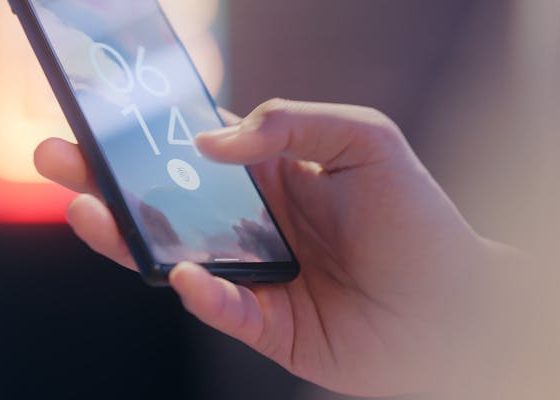
Artificial Intelligence (AI) has transitioned from the realm of science fiction to an integral part of our everyday lives. Its potential to revolutionize various sectors is immense, and as we move forward, understanding how AI will affect the future becomes crucial. This article delves into the multifaceted impacts of AI across different industries, exploring both the opportunities and challenges it presents.
The Dawn of AI: An Overview
AI refers to the simulation of human intelligence in machines designed to think and learn like humans. This technology encompasses a range of subfields, including machine learning, natural language processing, robotics, and computer vision. The advancements in AI have been driven by significant improvements in computational power, the availability of vast amounts of data, and the development of sophisticated algorithms.
Historical Context
The concept of AI dates back to the mid-20th century, with the pioneering work of Alan Turing and John McCarthy. However, it was only in the past few decades that AI technologies began to mature and find practical applications. From early expert systems to contemporary deep learning models, AI has come a long way, and its journey is only beginning.
List of How AI will Affect The Future
AI in Healthcare: A New Era of Medicine
One of the most promising areas for AI’s transformative potential is healthcare. AI has the ability to enhance diagnostics, personalize treatment plans, and streamline administrative tasks, thereby improving patient outcomes and reducing costs.
Enhanced Diagnostics
AI-powered diagnostic tools can analyze medical images, such as X-rays, MRIs, and CT scans, with remarkable accuracy. For instance, deep learning algorithms have been trained to detect anomalies in radiographic images, often surpassing human radiologists in identifying conditions like cancer and fractures. These tools can provide second opinions, reducing the likelihood of misdiagnosis and enabling earlier intervention.
Personalized Medicine
AI can process and analyze vast amounts of patient data, including genetic information, lifestyle factors, and medical history, to tailor treatment plans to individual patients. This approach, known as precision medicine, holds the promise of more effective therapies with fewer side effects. For example, AI algorithms can predict how a patient will respond to a specific drug, allowing for more targeted and efficient treatments.
Administrative Efficiency
AI can also alleviate the administrative burden on healthcare professionals. Natural language processing (NLP) algorithms can transcribe medical notes, automate appointment scheduling, and manage billing processes. By streamlining these tasks, AI allows healthcare providers to focus more on patient care and less on paperwork.
AI in Education: Shaping the Future of Learning
The integration of AI into education is set to revolutionize how we teach and learn. From personalized learning experiences to intelligent tutoring systems, AI offers numerous benefits that can enhance educational outcomes.
Personalized Learning
AI can analyze students’ learning patterns, strengths, and weaknesses to create personalized learning experiences. Adaptive learning platforms use AI algorithms to adjust the difficulty of content based on a student’s performance, ensuring that they are neither bored nor overwhelmed. This individualized approach helps students learn at their own pace, improving comprehension and retention.
Intelligent Tutoring Systems
AI-powered tutoring systems can provide real-time feedback and support to students. These systems use NLP to understand students’ questions and provide tailored explanations. For instance, a math tutoring AI can identify where a student is struggling and offer targeted practice problems to address those specific areas.
Administrative Support
AI can also assist educators with administrative tasks. Automated grading systems can evaluate assignments and provide feedback, saving teachers valuable time. Additionally, AI-driven analytics can identify at-risk students and recommend interventions, helping educators provide timely support.
AI in Finance: Transforming the Financial Landscape
The financial industry has been quick to adopt AI technologies, leveraging them to improve decision-making, enhance customer service, and detect fraudulent activities.
Enhanced Decision-Making
AI algorithms can analyze vast amounts of financial data to identify patterns and trends, enabling more informed decision-making. For example, AI-powered trading systems can execute trades based on real-time market data, reducing human error and increasing efficiency. These systems can also predict market movements, helping investors make better-informed decisions.
Improved Customer Service
AI-powered chatbots and virtual assistants are revolutionizing customer service in the financial sector. These tools can handle routine inquiries, such as balance checks and transaction histories, freeing up human agents to address more complex issues. Additionally, AI-driven sentiment analysis can gauge customer satisfaction and provide insights into how to improve services.
Fraud Detection
AI excels at detecting anomalies in large datasets, making it a valuable tool for identifying fraudulent activities. Machine learning algorithms can analyze transaction patterns to identify suspicious behavior, such as unauthorized transactions or account takeovers. By flagging these activities in real-time, AI helps financial institutions prevent fraud and protect customers.
AI in Transportation: Paving the Way for Autonomous Vehicles
The transportation industry is undergoing a significant transformation with the advent of AI. Autonomous vehicles, intelligent traffic management systems, and predictive maintenance are just a few examples of how AI is reshaping transportation.
Autonomous Vehicles
Self-driving cars are one of the most visible applications of AI in transportation. These vehicles use a combination of sensors, cameras, and AI algorithms to navigate and make driving decisions. Companies like Tesla, Waymo, and Uber are investing heavily in autonomous vehicle technology, aiming to reduce accidents, improve fuel efficiency, and enhance mobility for all.
Intelligent Traffic Management
AI can optimize traffic flow in cities by analyzing real-time data from traffic cameras, sensors, and GPS devices. Intelligent traffic management systems can adjust traffic signals, reroute vehicles, and predict congestion patterns, reducing travel time and emissions. These systems can also provide valuable data for urban planning, helping cities design more efficient transportation networks.
Predictive Maintenance
AI can analyze data from vehicles and infrastructure to predict when maintenance is needed. For example, machine learning algorithms can monitor the condition of roads and bridges, identifying signs of wear and tear before they become critical. Similarly, AI can predict when vehicle components are likely to fail, allowing for proactive maintenance and reducing downtime.
AI in Manufacturing: Revolutionizing Production Processes
AI is transforming manufacturing by enhancing production efficiency, improving quality control, and enabling the development of smart factories.
Production Efficiency
AI-powered robots and automation systems can perform repetitive tasks with high precision and speed. These systems can work alongside human workers, handling dangerous or monotonous tasks and increasing overall productivity. Additionally, AI can optimize production schedules and supply chain management, ensuring that resources are used efficiently and reducing waste.
Quality Control
AI can enhance quality control by analyzing products in real-time to identify defects. Computer vision systems can inspect products on assembly lines, detecting flaws that might be missed by human inspectors. This ensures that only high-quality products reach consumers, reducing returns and increasing customer satisfaction.
Smart Factories
The concept of smart factories involves the integration of AI, the Internet of Things (IoT), and advanced analytics to create highly automated and flexible production environments. In smart factories, machines communicate with each other and with central control systems, optimizing production processes in real-time. This leads to increased efficiency, reduced downtime, and greater agility in responding to market demands.
AI in Agriculture: Feeding the World Sustainably
AI has the potential to revolutionize agriculture by improving crop yields, reducing resource usage, and enhancing food security.
Precision Farming
AI can analyze data from sensors, drones, and satellite imagery to optimize farming practices. Precision farming techniques use AI algorithms to determine the optimal amount of water, fertilizer, and pesticides needed for each plant, reducing waste and improving yields. Additionally, AI can predict weather patterns and pest outbreaks, helping farmers make informed decisions and protect their crops.
Automated Machinery
AI-powered machinery, such as autonomous tractors and harvesters, can perform agricultural tasks with high precision. These machines can work around the clock, increasing productivity and reducing labor costs. For example, AI-driven harvesters can identify and pick ripe fruits and vegetables, ensuring that only the best produce reaches consumers.
Supply Chain Optimization
AI can enhance the efficiency of agricultural supply chains by predicting demand, optimizing transportation routes, and reducing food waste. Machine learning algorithms can analyze historical data and market trends to forecast demand, helping farmers plan their production accordingly. This ensures that food is delivered to consumers fresh and in a timely manner, reducing spoilage and increasing profitability.
AI in Retail: Transforming the Shopping Experience
The retail industry is leveraging AI to enhance the shopping experience, optimize inventory management, and improve customer service.
Personalized Shopping
AI algorithms can analyze customer data, such as purchase history and browsing behavior, to provide personalized recommendations. Online retailers like Amazon and Netflix use AI to suggest products and content that are likely to interest individual customers, increasing sales and customer satisfaction. In physical stores, AI-powered kiosks and mobile apps can offer personalized promotions and assistance.
Inventory Management
AI can optimize inventory management by predicting demand and automating restocking processes. Machine learning algorithms can analyze sales data and market trends to forecast demand for different products, ensuring that stores are stocked with the right items at the right time. This reduces the risk of overstocking or stockouts, improving profitability and customer satisfaction.
Customer Service
AI-powered chatbots and virtual assistants are transforming customer service in the retail industry. These tools can handle routine inquiries, such as order tracking and product information, freeing up human agents to address more complex issues. Additionally, AI-driven sentiment analysis can gauge customer satisfaction and provide insights into how to improve services.
AI in Entertainment: Redefining Creativity and Engagement
AI is making significant inroads into the entertainment industry, transforming how content is created, distributed, and consumed.
Content Creation
AI algorithms can generate music, art, and even literature, pushing the boundaries of creativity. For instance, AI-powered tools can compose music based on specific parameters, create realistic images from text descriptions, and write stories or articles. While these creations may not replace human artists, they can serve as valuable tools for inspiration and collaboration.
Personalized Content
AI can analyze user preferences and behavior to deliver personalized content recommendations. Streaming platforms like Netflix and Spotify use AI to suggest movies and music that align with users’ tastes, enhancing their viewing and listening experiences. These recommendations are based on complex algorithms that consider a multitude of factors, including previous interactions, ratings, and even the time of day a user is most active.
Virtual and Augmented Reality
AI is also playing a crucial role in the development of virtual reality (VR) and augmented reality (AR) experiences. AI-driven algorithms can create more immersive and interactive environments by understanding and predicting user behavior. In gaming, AI can generate realistic non-player characters (NPCs) that respond dynamically to player actions, creating a more engaging experience. In film and TV, AI can help create interactive narratives that adapt based on viewer choices.
AI in Law: Enhancing Legal Processes
The legal industry is beginning to harness the power of AI to improve efficiency, accuracy, and accessibility.
Legal Research
AI-powered tools can rapidly analyze vast amounts of legal documents and case law to identify relevant information. These tools use natural language processing to understand legal language and provide insights that would take human researchers significantly longer to uncover. This accelerates the legal research process, allowing lawyers to focus on strategy and client interaction.
Contract Analysis
AI can automate the review and analysis of contracts, identifying potential risks and ensuring compliance with regulations. Machine learning algorithms can be trained to recognize standard clauses, flag unusual terms, and suggest revisions. This reduces the time and cost associated with contract review and minimizes the risk of human error.
Predictive Analytics
AI can analyze past case outcomes to predict the likely success of future cases. Predictive analytics tools use historical data to identify patterns and trends, helping lawyers make informed decisions about case strategy. These tools can also estimate the potential costs and timeframes associated with different legal actions, aiding in resource allocation and client management.
AI in Environmental Conservation: Protecting the Planet
AI is becoming an invaluable tool in the fight against environmental degradation and climate change.
Wildlife Monitoring
AI-powered drones and camera traps can monitor wildlife populations and track endangered species. Machine learning algorithms can analyze images and videos to identify individual animals and their behaviors, providing valuable data for conservation efforts. This technology enables researchers to study wildlife with minimal disturbance and collect data in remote or dangerous locations.
Climate Modeling
AI can enhance climate models by processing vast amounts of data from satellites, weather stations, and other sources. These models can predict the impacts of climate change with greater accuracy, helping policymakers and scientists develop effective mitigation and adaptation strategies. AI can also optimize renewable energy systems, such as wind and solar power, by predicting energy production and demand.
Pollution Control
AI can help detect and manage pollution by analyzing data from sensors and other monitoring systems. Machine learning algorithms can identify sources of pollution, predict pollution levels, and recommend actions to reduce emissions. For example, AI can optimize industrial processes to minimize waste and improve efficiency, reducing the environmental footprint of manufacturing activities.
Ethical and Social Implications of AI: Navigating Challenges
While AI holds immense potential for positive change, it also presents significant ethical and social challenges that must be addressed.
Bias and Fairness
AI systems can inadvertently perpetuate or amplify existing biases in data. For example, facial recognition systems have been shown to perform poorly on individuals with darker skin tones, leading to concerns about racial bias. Ensuring fairness in AI requires careful consideration of training data, algorithm design, and ongoing monitoring to identify and mitigate biases.
Privacy and Security
The widespread use of AI raises concerns about privacy and data security. AI systems often rely on large amounts of personal data, creating risks of data breaches and unauthorized access. Protecting privacy requires robust security measures, transparent data practices, and regulatory frameworks to ensure that individuals’ rights are safeguarded.
Employment and the Future of Work
AI’s impact on employment is a topic of significant debate. While AI has the potential to create new jobs and industries, it may also displace workers in certain sectors. Ensuring a just transition to an AI-driven economy requires investment in education and training programs to equip workers with the skills needed for new roles. Policymakers must also consider measures to support workers affected by automation and ensure that the benefits of AI are broadly shared.
The Future of AI: Opportunities and Uncertainties
As we look to the future, the potential of AI to transform our world is both exciting and uncertain. The trajectory of AI development will be shaped by technological advancements, regulatory frameworks, and societal attitudes.
Technological Advancements
Ongoing research and development in AI will continue to push the boundaries of what is possible. Advances in areas such as quantum computing, neuromorphic engineering, and explainable AI could unlock new capabilities and applications. Collaboration between academia, industry, and government will be crucial in driving innovation and ensuring that AI technologies are developed responsibly.
Regulatory Frameworks
Effective regulation will play a key role in shaping the future of AI. Policymakers must strike a balance between promoting innovation and protecting public interests. This includes addressing issues such as data privacy, algorithmic transparency, and the ethical use of AI. International cooperation will be essential in establishing harmonized standards and ensuring that AI benefits are realized globally.
Societal Attitudes
Public perception and acceptance of AI will influence its adoption and impact. Building trust in AI requires transparency, accountability, and engagement with diverse stakeholders. It is essential to involve the public in discussions about AI’s implications and ensure that their concerns and values are reflected in policy decisions.
Conclusion:
The transformative potential of AI is undeniable, offering opportunities to enhance various aspects of our lives, from healthcare and education to finance and transportation. However, realizing this potential requires careful consideration of the ethical, social, and economic challenges that accompany AI development and deployment.
By fostering a collaborative and inclusive approach, we can navigate these challenges and ensure that AI serves as a force for good. As we embrace the AI-driven future, it is essential to remain vigilant, adaptable, and committed to the principles of fairness, transparency, and human-centered design.
In understanding how AI will affect the future, we must acknowledge both its promise and its pitfalls. By harnessing the power of AI responsibly, we can create a future where technology enhances human potential, drives sustainable development, and improves the quality of life for all.












